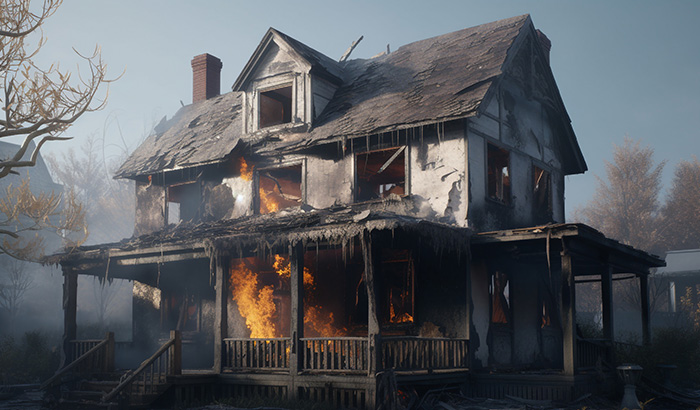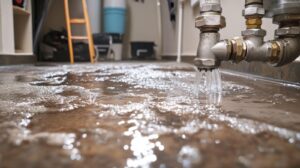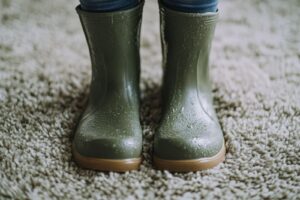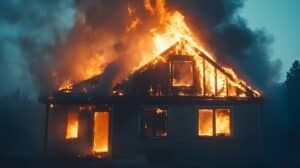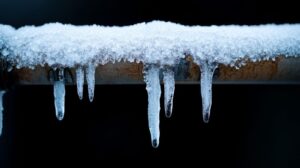No matter the size, a fire is traumatic — identifying smoke damage is crucial to ensure your home or business is safe from further harm.
Smoke damage is one of the most common outcomes of fires, and its effects can linger long after the flames have been extinguished. Identifying smoke damage is crucial, as it can impact the structural integrity of a building and pose serious health risks.
Today, we’re exploring the various aspects of smoke damage, including its causes, types, and the necessary steps for restoration and prevention.
Causes of Smoke Damage
Smoke damage occurs when the byproducts of incomplete combustion interact with surfaces in your home or property. Soot, ash, and volatile organic compounds (VOCs) are examples of byproducts that cause this damage.
Smoke damage can result from various sources — not just fires. Everyday activities such as cooking, using candles or incense, and smoking tobacco products indoors also introduce smoke particles into the environment.
Types of Smoke Damage
The aftermath of a fire is not a one-size-fits-all scenario — smoke damage manifests itself in various forms, each presenting unique challenges for restoration. The most common types of smoke damage include:
- Wet Smoke: A slow-burning fire produces thick, pungent smoke. This type of smoke is difficult to clean because the particles are small, wet, and sticky. Wet smoke tenaciously adheres to surfaces, leaving a strong odor and oily residue behind.
- Dry Smoke: Dry smoke damage results from fast burning and high temperatures that consume materials rapidly. Dry smoke damage cleanup is easier to clean than wet smoke — however, this type produces fine, powdery smoke that can penetrate deep into porous surfaces, making complete removal difficult.
- Protein Residue: Protein residue is produced when organic material evaporates during a low-heat fire. This commonly happens in kitchen settings when protein is cooked at high temperatures. This type of smoke damage is essentially invisible, leaving behind a thin film on surfaces. It can permanently discolor painted, varnished, or finished surfaces.
- Fuel/Oil Residue: Fuel or oil residue is also often referred to as petroleum residue. This damage is uncommon in homes or buildings unless petroleum is stored in the space. The residue is dense and sticky, making petroleum smoke damage clean up very challenging.
Identifying Smoke Damage
Recognizing the signs of smoke damage is essential for prompt intervention so normal life can resume as quickly as possible. Homeowners and property managers should be vigilant in inspecting their buildings after a fire, even if the flames are minor. Here are several factors that can indicate smoke damage:
1. Yellowing on Walls, Ceilings, and Surfaces
Smoke is known for leaving behind yellow or brown coloring on walls, ceilings, or any surfaces it strokes. These stains worsen over time and are the most evident in areas near the source of the smoke. For this reason, you’ll often see a surge of discoloration around light fixtures and vents.
2. Dark Fabric Stains
Fabric is one of the first materials affected by a fire. Smoke particles penetrate fabrics, leaving behind dark stains and persistent smells. These stains are challenging to eliminate and are best left in the hands of a smoke damage restoration professional.
3. Residue Buildup on Smooth Surfaces
One of the most stubborn signs of smoke damage is residue buildup on glass, mirrors, or other smooth surfaces. This sticky, greasy film latches onto surfaces discreetly, making cleaning more of a headache — but, with proper smoke damage clean-up techniques, your furniture can be restored.
4. Unpleasant, Smoky Odor
Many find comfort in the smell of burning wood and cooking food. These smells evoke memories beyond the aroma of crisp fall days, sharing stories around a campfire or winter evenings beside a cozy fire. Unfortunately, a house fire leaves behind a pungent smell that matches its level of destruction and trauma.
The smoke and soot from a house fire clings to surfaces like clothing and furniture, meaning you’re constantly surrounded by these persistent odors. This also makes it challenging to eliminate the smell without proper remediation. A smoke damage restoration team can discern between fresh and old smoke smells to determine the best restoration approach.
5. Soot Deposits
Soot is often one of the first recognizable signs of smoke damage. Soot is the black, powdery residue produced from incomplete combustion. It accumulates on walls, ceilings, surfaces, and objects caught in the smoke’s path.
Soot is hazardous to inhale, especially for those with respiratory conditions. Soot in the air can exacerbate breathing difficulties and other health issues. Given these risks, it’s essential to flee the area and leave all soot and smoke damage clean up to the professionals. By seeking professional assistance, you can ensure a thorough and safe cleanup process.
6. Damaged Appliances and Electronics
Tiny smoke particles can navigate around a room and into the most minuscule crevices, even inside your appliances and electronics. When these particles infiltrate your devices, they might malfunction or even fail. Signs of smoke damage in appliances and electronics include unusual smells, odd noises, glitches, or overheating.
If you suspect smoke damage, stop using your devices and seek professional evaluation or repair as needed. Smoke residues can interact with electrical components, leading to overheating or a subsequent fire — considering these risks, it’s crucial to have your appliances and electronic devices inspected before use.
7. Poor Indoor Air Quality
Smoke damage can quickly degrade indoor air quality by introducing soot, ash, and VOCs. Exposure to these particles can trigger mild to serious health implications, including:
o Respiratory problems
o Eye and skin irritation
o Allergic reactions
o Headaches and dizziness
o Other long-term health effects
8. Warping and Corrosion on Wood, Plastic, and Metal
Fires and smoke damage can cause wood, plastic, and metal to warp due to excessive heat and the corrosive nature of smoke residues. This might affect the object’s structural integrity along with aesthetics. Without specialized cleaning and restoration techniques, this corrosion might worsen over time.
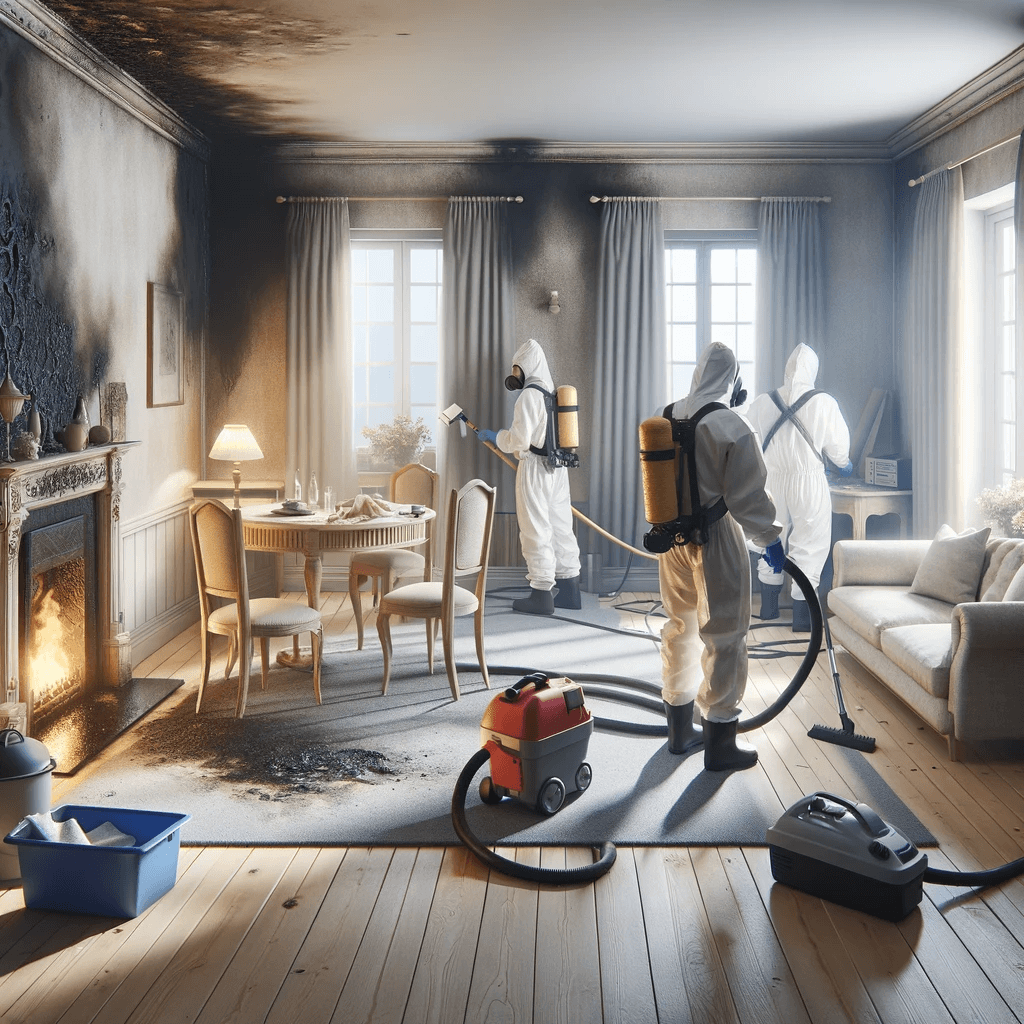
Steps for Addressing Smoke Damage
If you find yourself affected by smoke damage, a systematic approach is necessary for identification and assessment. Follow these steps to stay safe as you navigate your evaluation:
- Exercise Safety and Caution
Before entering a fire-damaged room or property, check with your designated officials (firefighters, restoration specialists, etc.) that it is safe to do so. Professionals should address structural stability, gas leaks, and other hazards before entering the area.
- Document the Damage
Once a fire expert has deemed the area safe, take photographs and detailed notes of the affected areas. This documentation will be valuable as you navigate the insurance claims process.
- Assess the Extent of the Damage
Determine the areas and materials that were affected by the smoke damage. You can determine the type of smoke damage present by the coloring, density, and extent of the damage.
- Identify Hidden Damage
Smoke particles can also penetrate hidden cracks and crevices. Inspect your ventilation system, crawl spaces, appliances, electronic devices, and areas behind furniture and walls to detect any hidden smoke damage.
- Check for Residual Odor
As you cautiously inspect the fire-damaged area, check for any residual odor, as this can indicate the presence of hidden particles. Professionals will use specialized equipment to pinpoint and neutralize odors.
- Contact a Professional
There are many unknowns when it comes to smoke damage — the unknown extent of the damage, health implications, and more. Considering these dangers, smoke damage restoration is always best left to the professionals. These experts will conduct a thorough assessment, detect hidden damage, and provide a detailed analysis and remediation plan.
Mitigation and Restoration
Once the damage has been acknowledged and assessed by a licensed professional, prompt mitigation is essential. The restoration process typically involves the following steps:
- Safety Measures
Qualified experts will ensure proper safety measures are in place before beginning restoration work. This includes wearing protective gear, ventilating the area, and securing the property against further hazards.
- Soot Removal
Soot removal is the first step in the cleaning process since soot tends to be all-encompassing. Professionals will apply the proper approach depending on the type of smoke damage. For example, dry smoke requires a different strategy than wet smoke.
- Odor Neutralization
With the soot addressed, it’s time to tackle those pungent, lingering odors. Addressing these odors is crucial for creating a livable environment again. Restoration teams will use various methods, including ozone generators, thermal fogging, and air scrubbers to neutralize smoke odors.
- Structural Repairs
Next, professionals will tackle any structural damage caused by the fire. This involves repairing anything affecting the building’s integrity.
- HVAC System Cleaning
Smoke particles can infiltrate the HVAC system, resulting in a necessary cleaning. Experts will thoroughly clean and replace any necessary components of the HVAC system.
- Preventative Measures
Installing smoke detectors, maintaining fire safety equipment, and conducting regular inspections of electrical and heating systems are preventative measures to protect your home against fires.
Trust Black Diamond Restoration for Your Smoke Damage Restoration Needs
Black Diamond Water Damage and Disaster Restoration provides the best fire and smoke damage restoration services for you and your home. We are ready 24/7 to serve all of your restoration needs. We are based in Murray, Utah, and proudly serve Salt Lake City and the surrounding areas.
Don’t let smoke damage take a toll on your property and well-being — contact Black Diamond Restoration today or call 801.383.0964 to schedule your emergency service.
toto slot
